I think every animal has appeared on a hair comb at one time or another. A friend of mine has an ivory rat comb! In what category should I show that? What about with a kanzashi bat?
Ivory Comb, English. c. 1880.
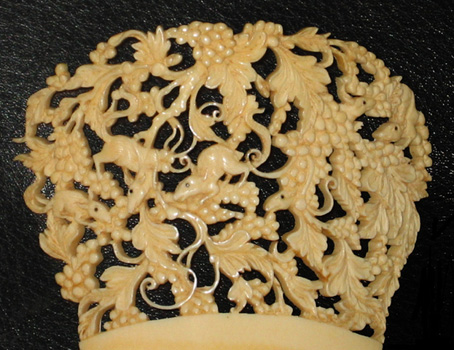
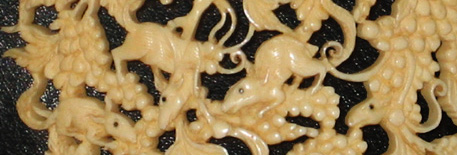
Tortoiseshell kanzashi, bat, c. 1880.
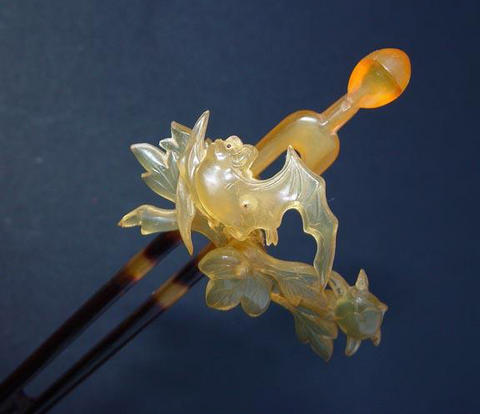

I think every animal has appeared on a hair comb at one time or another. A friend of mine has an ivory rat comb! In what category should I show that? What about with a kanzashi bat?
Ivory Comb, English. c. 1880.


Tortoiseshell kanzashi, bat, c. 1880.

Man’s love affair with creating birds started with the earliest cave paintings. They are everywhere, and have always been a major theme in comb making. Recently, a beautiful ivory bird comb, Chinese c.1870, sold for $350. It got me thinking about doing a collection of bird combs on the blog. A friend of mine graciously sent me pictures of bird combs in her private collection. I own two bird combs, and there is a remarkable swallow comb at The Tadema Gallery in London. So here they are… the birds.
Mythical Bird on Edo Kogai stick, c. 1850
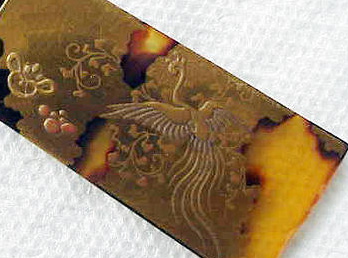
Ivory bird comb, Chinese, c.1870, sold Sept. 30, 2006 for $350, ebay.
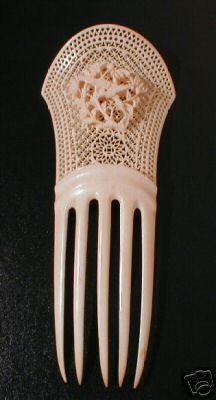
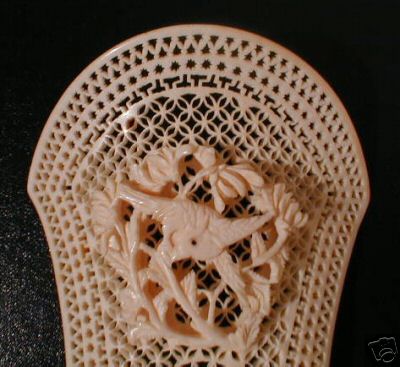
Ivory Bird on a bamboo tree, Chinese, c. 1870, a private collection.
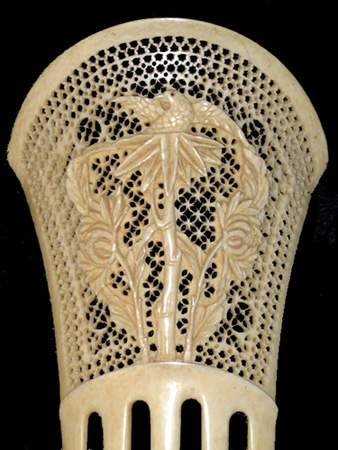
Tortoiseshell Bird on a stick, Italian, c.1870, my private collection.
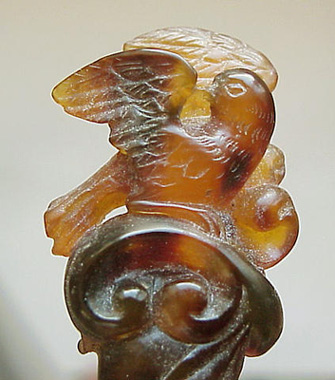
Ivory birds in a flower garden, Chinese, c. 1880, a private collection
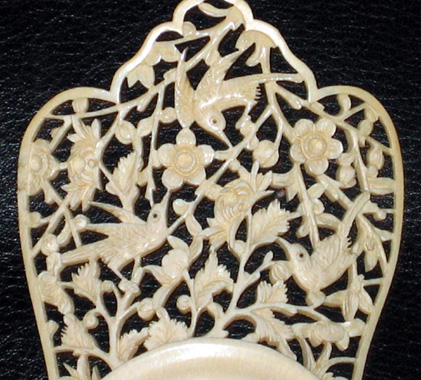
Black Crow on a Meiji Kushi, c. 1890
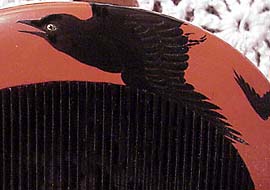
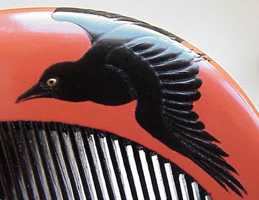
Silver filigree, micromosaic decoration, Italian, c. 1898.
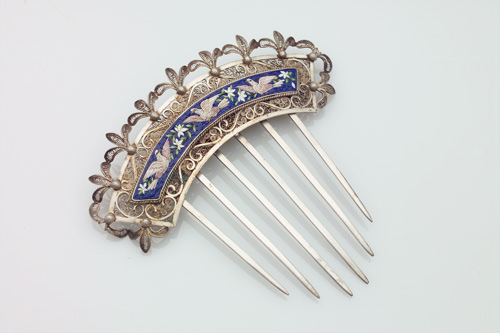
Swallow Comb, c. 1900, gilded silver and plique-a-jour enamel, from the British Arts and Crafts period, The Tadema Gallery, London. The price range for this comb is 2,500 to 5,000 British Pounds Sterling.
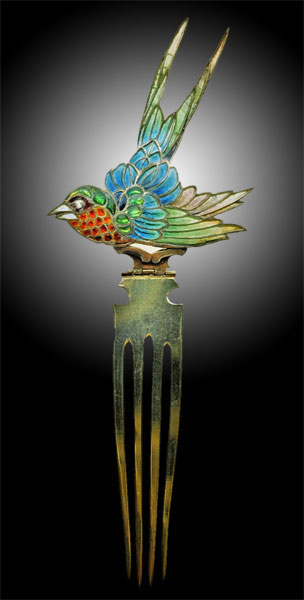
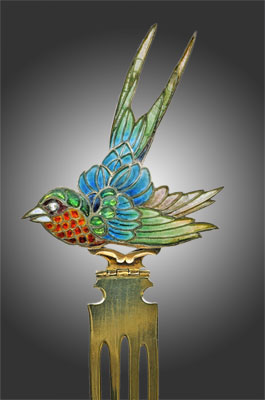
Three art deco parrot combs, celluloid, c. 1920, a private collection.
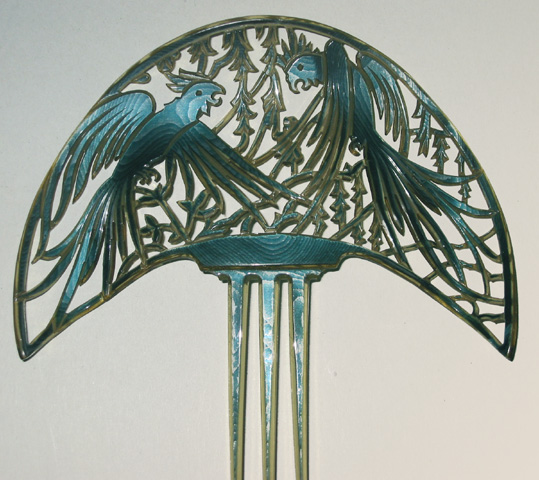
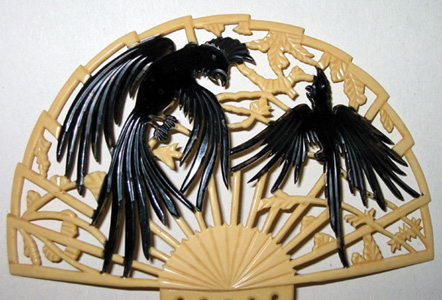
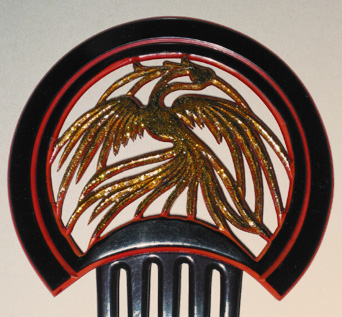
Well, sometimes your mind explodes. I would have never thought a comb Rene Lalique made with his own hands would come to public auction. I would have thought a museum would grab this for their lives before any competition would find it.
Here it is: “Rare Horn, Mother-Of-Pearl, Enamel and Topaz Tiara, Circa 1903, Rene Lalique.” Estimate: $330,000.
Description: “Naturalistically designed as branches of pussy willows, the trunk bark defined by wedge-shaped topaz offset by a brown enamel field, continuing to carved gold and horn branches painted with brown enamelling, punctuated with carved mother-of-pearl and horn pussy willows in various stages of bloom, the three-prolonged comb of horn, connected to the diadem by a gold hinge, signed”
It went to Albion Art’s Virtual Museum.
From Diana Scarisbrick: “A French Art Nouveau horn, mother of pearl, enamel, topaz and yellow gold diadem by René Lalique, designed as two stylised trailing willow (Salix) stems, the three pronged hinged horn comb supporting a textured yellow gold trunk set with three rows of baguette-cut topaz from which emanates to either side two trailing branches of carved mother of pearl and horn catkins in various stages of development, signed ‘LALIQUE’.
“In his quest for a new style of jewellery, Lalique challenged the conventional tiara crowning the heads of women at formal events, signifying their wealth and status. The alternative he offered here is inspired by the commonest of trees, the willow. As in nature, he attaches two leafless branches complete with catkins to the bark of the tree, and places them so that they rise above the brow, drawing attention to the head, not through the glitter of diamonds, but by the sheer originality of the motif. Similarly typical of his independent style are the materials used – mother of pearl, horn, enamelled gold – which are inexpensive and relatively humble. The three pronged transparent horn comb below is hinged so as to lie flat on the crown of the head and support the arched ornament framing the face. These jewels for the hair were popular and it is significant that of the nine combs Lalique showed at the exhibition held at Agnew’s in London in 1905, no less than eight were made of horn.”
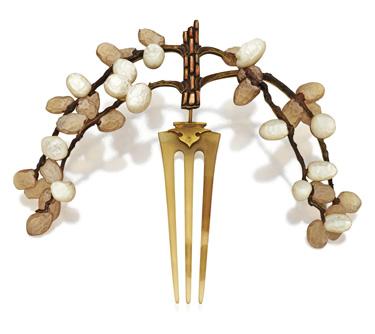
The Victorian and Edwardian periods produced a lovely style of comb: shell with a metal tiara attached, which folds back. Here is a real one. Diamond and Shell comb, c. 1890. Floral spray tiara with European-cut old-mine diamonds, which weigh approximately 3 carats. Est. $3000 – $5000. Sotheby’s. Final Sale Price: $7200.
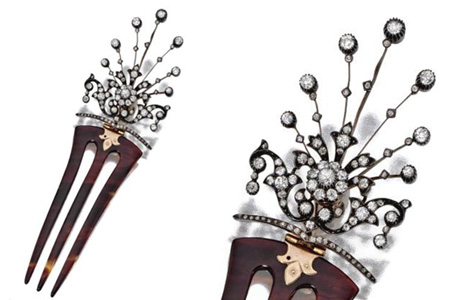
These tiaras are decorated with glass crystals or fake pearls. They were made c.1870-1880 and sell for around $550 each.
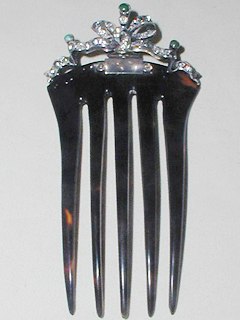
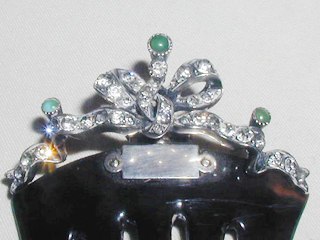
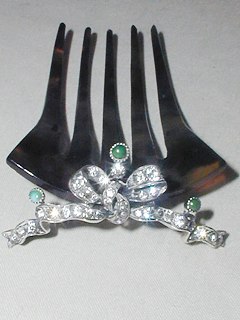
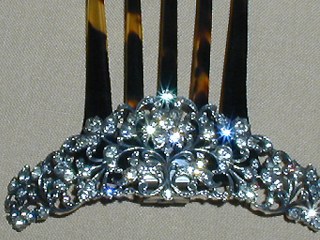
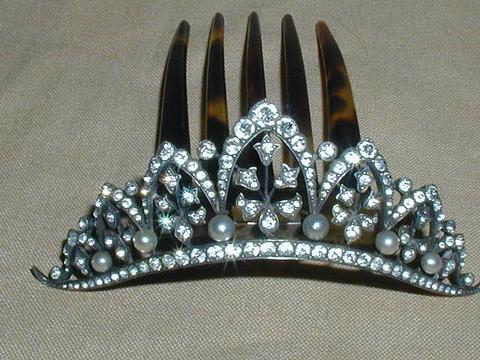
Two historical periods created my favorite combs: Edo Japan and Art Nouveau France. The artistry embodies two completely different concepts, one painting and inlay on a flat ivory surface, the other an orchid sculpture or horn, ivory and glass made by Rene Lalique with his own hands. Examples:
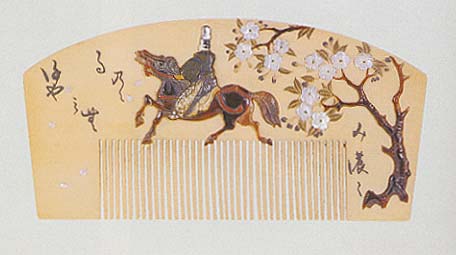
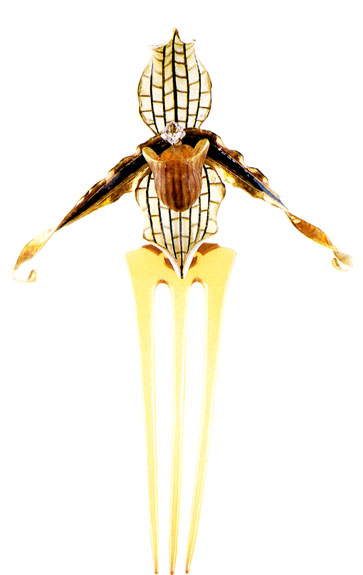
This white jade hairpin comes from 17th-Century China and has a kylin finial, length 8″. A kylin, or Qilin, is a mythical hooved Chinese chimerical creature that brought serenity, and was used as a good luck omen. People think it was the first Chinese name for giraffe. This is an absolutely magnificent piece, which went for $550 on August 26, 2006..

I am buying a very interesting late Meiji kushi and kogai set. Although the material is tortoiseshell, has gaps in the gold makie paint to allow light to show through the comb, has the Meiji feature of the design folding over the top of the comb as it goes from front to back, and the size and shape are definitely Meiji, this set is creeping toward a modern aesthetic.
Like modern Japanese sets, the design objects are bigger, the painting goes over the tines of the comb, there is a bigger picture on the front and a punctuated design on the back, and most notably, there is color. I think the red flowers on this comb got to me, and I had to have it. But I love this set because it has one foot in the past and one foot in the future.
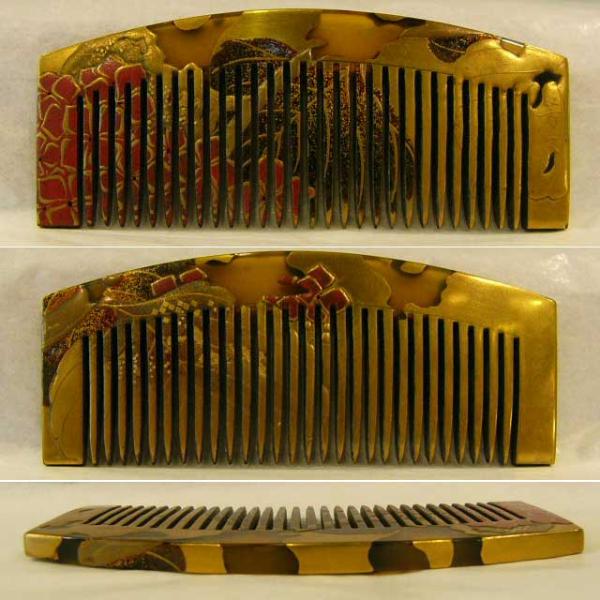
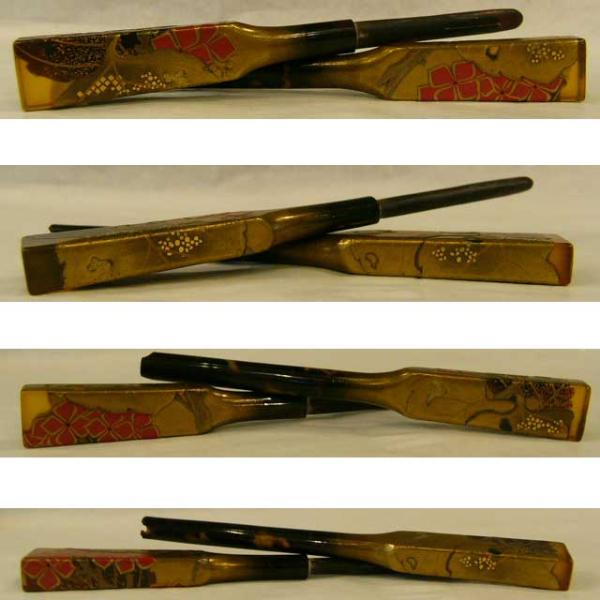
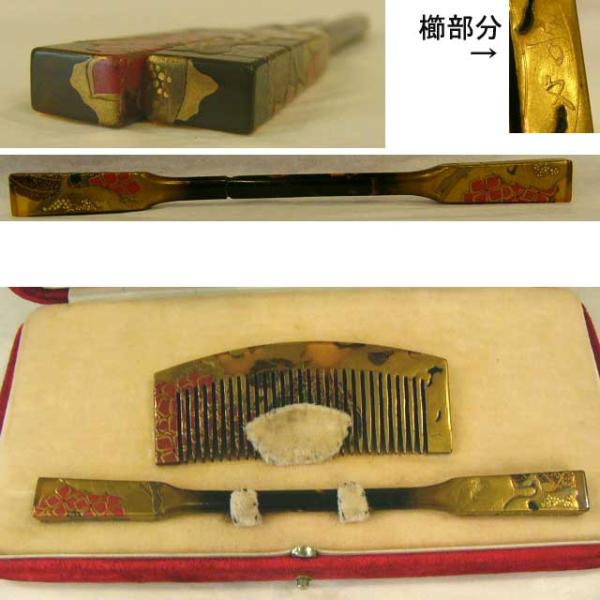
This gorgeous platinum, diamond, and tortoiseshell opera comb sold for $2200. It is a classic example of Victorian style.
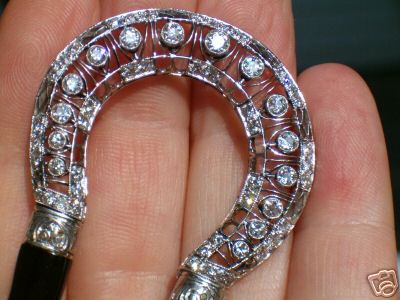
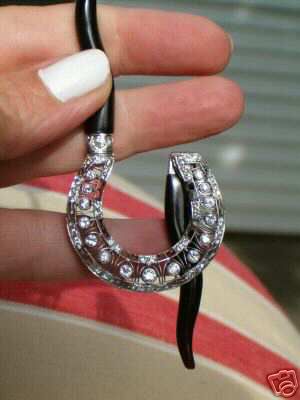
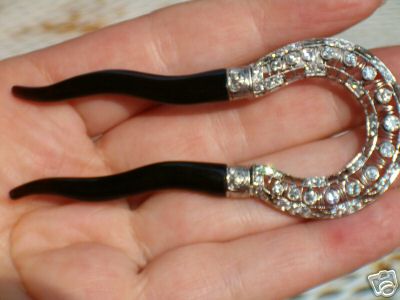
These are just some beautiful combs. For those beginning their road into the intense world of comb collecting, it is always nice to see what you might find if you look hard enough. This is an English art deco comb.
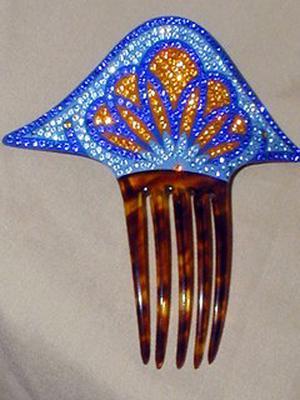
This is a French art deco comb by Auguste Bonaz. Notice the depth of the red, the proportions of this. The rhinestone design in the center is still used by French hair accessory designers today.
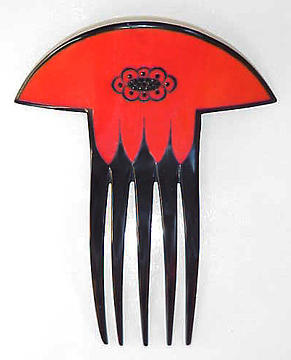
Both this red comb and the ivory fish comb are early Edo. I shudder to think what they cost the collector.
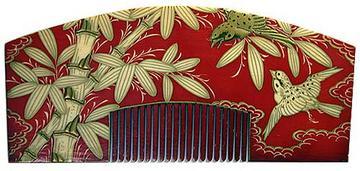
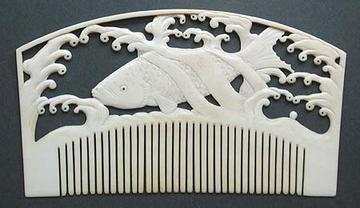
The most beautiful drop-dead Victorian pearl tiara you will probably ever see in your life.
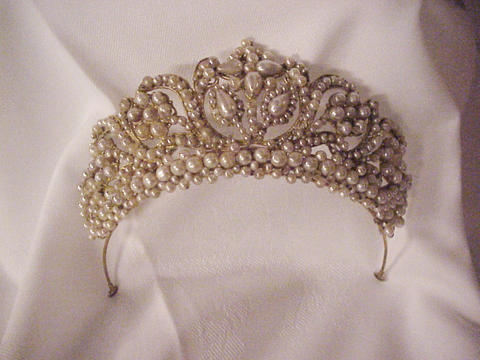
These are two Victorian combs in the Algerian style.
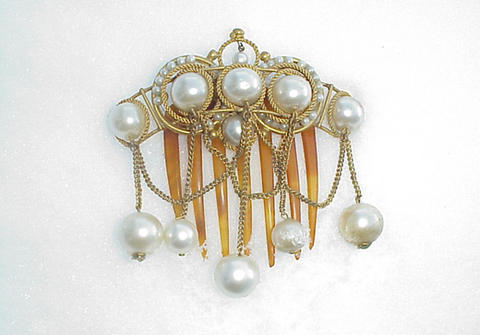
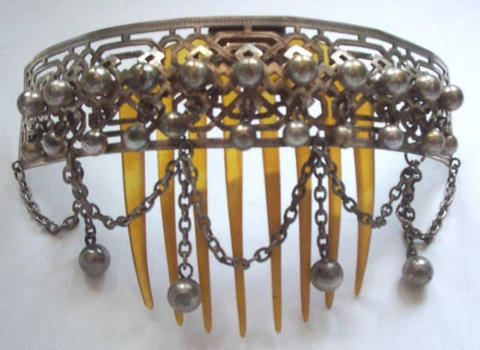
This is a shell and pearl hairpin that I sold to someone who wore it at her wedding.
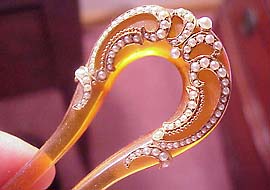
This is a Victorian horn comb, brass tiara, with fabric flowers and black-bead dangles from the Norma Hague collection.
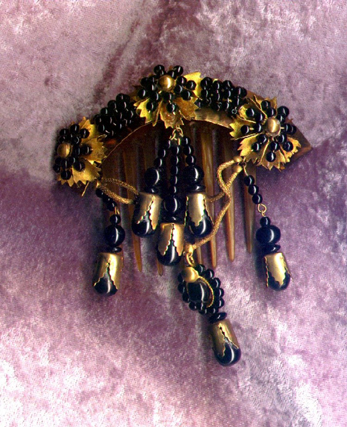
This is a hairstick in two colors of tortoiseshell, Chinese, 1890, and thankfully, I still have it.

This is an antique silver and bone comb with dangles, from China.
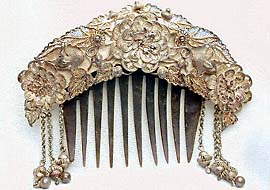
There are some sellers of tribal arts who can get a good price for an African hair comb. Most of the time, I think they are extremely undervalued, given the artwork and great tradition of comb making on that continent. This comb brought in a good price, $155.50 on June 20, 2006, maybe because it was brass. I just thought the two elephants give it a sense of humor. It was made in the Ivory Coast by a Baule artist.
